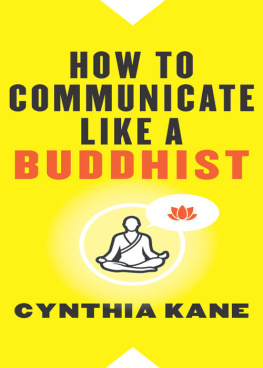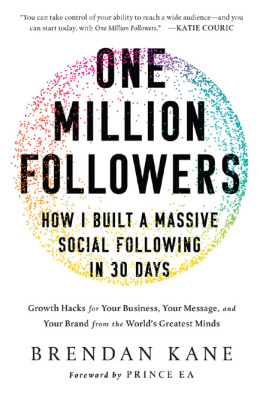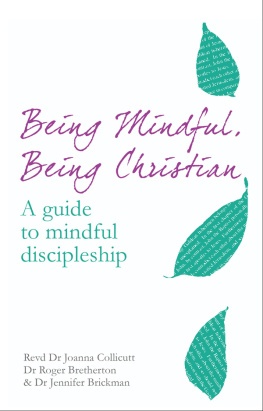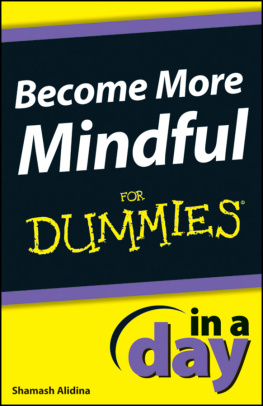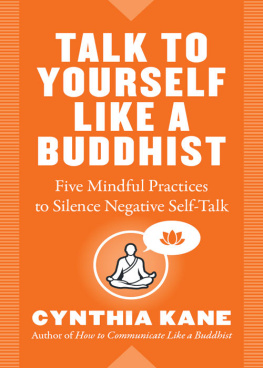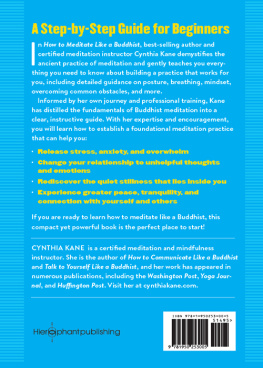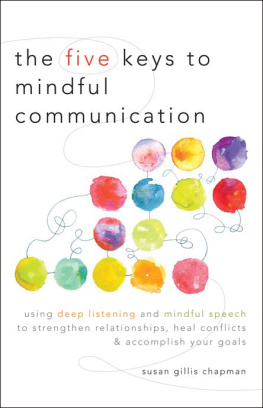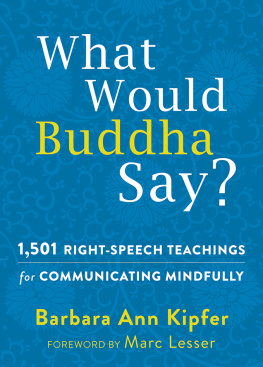
Copyright 2016
by Cynthia Kane
All rights reserved, including the right to reproduce this work
in any form whatsoever, without permission in writing from the
publisher, except for brief passages in connection with a review.
Cover design by Emma Smith
Cover art Steinar | Shutterstock
Interior design by Steve Amarillo
Hierophant Publishing
8301 Broadway, Suite 219
San Antonio, TX 78209
888-800-4240
www.hierophantpublishing.com
If you are unable to order this book from your local bookseller,
you may order directly from the publisher.
Library of Congress control number: 2016931680
ISBN: 978-1-938289-51-4
10 9 8 7 6 5 4 3 2 1
Printed on acid-free paper in the United States of America
This book is dedicated to you, the reader.
May it show up for you when you need it most.
Before you speak,
let your words pass through three gates.
At the first gate,
ask yourself, Is it true?
At the second gate,
ask, Is it necessary?
At the third gate,
ask, Is it kind?
Sufi saying
Contents

Introduction
Don't try to use what you learn from Buddhism to be a
Buddhist; use it to be a better whatever-you-already-are.
Dalai Lama
F or many years I relied on others as a communication style. What I mean is I rarely expressed any of my needs or wants, thinking that others would just be able to pick up on them. I would pretend everything was fine, say yes when I really wanted to say no, or go along with what I knew others wanted to hear. Never expressing myself meant I was bubbling with passive-aggressive quips, all the time frustrated and reacting because my needs weren't being met. Ask me then what the issue was, and I would've blamed everyone else. Ask me now, and I'd tell you it was that I didn't understand what real communication looked like, and how paying attention to my words, being aware of what I was saying while I was saying it, and observing without judgment could change my relationship to myself and others.
I was a product of what I was surrounded by. My teachers growing up were first and foremost my parents and other family members, but this isn't a statement of blame, as they were simply doing what they'd learned to do from their families, and their families' families, and on it goes. The other educators in my life were my friends and boyfriends, and from them I picked up habits from their communication trees. When I finally took notice of my communication style, I realized none of it was actually mine!
Think for a minute about your default style of communicating. Maybe you have habits that include selectively listening, talking over others to make a point, knowing better than others, interrupting, complaining, shutting down and walking away, or taking the role of the victim. Or maybe you've not stopped to think about how you communicate. If this describes you, don't worryyou're not alone. Many of us are walking around with a communication routine that we're unaware of. We've performed it so many times it's embedded in our day-to-day lives without us even realizing it's there or knowing it's ours. Sometimes it's possible words are coming out of our mouths and we're not really sure what we're saying, or we give a facial expression and we only become aware that we've done so because the person we're with points it out to us. But as with any aspect of our personality, we can change it if it's no longer proving useful.
This book came out of my own need to redefine my communication style. To rework how I interacted with the world around me and communicated with others and myself. When I looked closely, I saw that my default methods of communication led me to interact with others in a way that was completely out of step with what I really wanted.
Although I wanted to be open and understanding, and compassionate, and celebrate others, all I could do was react from a place of insecurity because I felt like others' goodness took away from mine, or their successes somehow made mine further out of reach. Comparing myself to others made me even more reactionary, pushing me to be passive-aggressive and blame others for what I wasn't feeling or doing. If a girl I knew looked pretty, well, that meant I looked ugly. If a friend of mine just got published in the New York Times, well, that meant I was further away from achieving something similar. A friend got engaged, well, that meant I was never going to find someone to love.
So what changed? One of my best friends tragically passed away, and with his passing the world looked different. What I saw was that life was too beautiful to be upset all the time, constantly comparing, competing, thinking this is right that is wrong. Life was too unpredictable to disrespect others and myself with my interactions. Life was to be enjoyed, not to suffer through. I craved to feel present, to enjoy my time here. I read books, took courses, signed up for workshops, all on this quest to care for myself; to understand how to feel good in my day-to-day. And no matter the class, or teacher, or mentor, over and over again I found that the root of my unhappiness and insecurity came from how I communicated. How I talked with others and myself dictated so much of my feeling state that to really enjoy each moment, to be here now, I had to teach myself a new way of interacting.
My search lead me to the Shambhala Meditation Center of New York, where I learned about Buddhism's four elements of right speech. When I first heard about this it was like my internal oven timer had gone off, as I knew I could use these principles as a base for communicating. Remember, you don't have to be a Buddhist to communicate like one, as the benefits of doing so are available to everyone.
The four elements are rules of communication, and over the last five years I have modernized and melded them with other forms of mindful, nonviolent, and what I call self-responsible communication to create a working practice. Changing how I communicated with others and myself helped me in so many ways: it increased my self-esteem, reduced stress and anxiety, and even improved my sleeping habits; it helped me understand my own feelings and the feelings of others, enhanced my appreciation for life, reduced reactivity and compulsive behavior, and helped me identify my wants and clarify goals. Changing the way I communicated helped me to create a more calm, balanced, and energized life. Through my communication practice I've become a better friend, daughter, sister, wife, aunt, employee, and coworker without sacrificing my own happiness in the process. My hope for you is that by changing the way you communicate you too can change your life and the lives of others.
What This Book Will Teach You
In the beginning, I'll explain the traditional Buddhist elements of right speech, as they are foundational. The rest of the book is devoted to my own concrete practice that I have developed over the past five years. As you will see in the following pages, creating a new communication routine begins by making small changes. Many of the examples cover small communication topics, because what I've found is that by making changes in the smaller day-to-day conversations, we are better prepared to communicate more effectively when larger life issues come up. Also, if we master our day-to-day interactions, we can potentially prevent some of the larger communication issues from even arising!
The first part will help you identify what type of communicator you are right now. This will help you see exactly what you need to work on and how this book can help transform your communication routine. I'll then introduce the elements of right speech.
Next page
